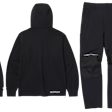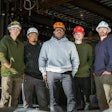
Skin cancer is the most common cancer in the U.S., with 20 Americans dying each day of melanoma – the deadliest form, notes the American Academy of Dermatology.
The U.S. Centers for Disease Control (CDC) notes the Occupational Safety and Health Administration requires employers to minimize risk of harm to workers and that employers may be required to provide workers’ compensation to employees who get skin cancer because of sun exposure on the job.
Every year, Americans lose more than $100 million in productivity because of restricted activity or absence from work due to skin cancer, the CDC points out. In a recent study published in the National Library of Medicine, ‘An Overview of Ultraviolet Protective Clothing,’ researchers note adequate sun protection and limiting ultraviolet radiation (UVR) transmittance are associated with several known health benefits, including the prevention of life-threatening skin cancer.
While applying sunscreen is a popular sun-protective method, large amounts of sunscreen absorbed dermally have been found to cause detrimental neurotoxic, endocrine and developmental defects, researchers note.
What is UPF Clothing?
Photoprotective methods such as chemical laundering additives and UV textiles have emerged, with effectiveness in blocking UV rays as rated on the ultraviolet protection factor (UPF) scale. The chemical make-up of additives remains unknown and further research is needed to confirm that these products do not pose unforeseen health risks, researchers add. UV textiles generally provide photoprotection by using synthetic, tightly woven polyester and/or nanofibers, as well as dying clothing in darker or brighter colors, but due to the fact UV-protective clothing is of recent origin, few studies have been conducted to investigate its efficacy, the study notes.
The ongoing transition from using the UPF scale to using the Garment Protection Factor scale – which takes into consideration body surface area during the determination of photoprotective quantity – suggests that sun protection may be best achieved by using a combination of UV textiles and sunscreen, with the former covering a significant portion of the body surface and the latter protecting the remaining body regions exposed to UVR.
The AAD recommends using sunscreen that offers broad-spectrum protection against long-wave ultraviolet A rays (UVA) and short-wave ultraviolet B rays (UVB); has a sun protection factor (SPF) of 30 or higher and offers water resistance.
According to the Skin Cancer Foundation, the UPF indicates how much ultraviolet (UV) radiation – both UVA and UVB – a fabric allows to reach the skin. For example, fabric with a UPF of 50 blocks 98 percent of the sun’s rays and allows two percent to penetrate, significantly reducing exposure risk. A fabric must have a UPF of 30 to qualify for the Foundation’s seal of recommendation.
Choosing UPF Clothing for Construction
When seeking the best apparel for working outdoors on a construction site, look for lightweight and long-sleeved shirts and pants that cover as much skin as possible. Avoid loose, open weaves. Dark colors offer more protection over light, keeping UV rays from reaching the skin by absorbing them rather than allowing them to penetrate.
The Skin Cancer Foundation notes tight clothing can stretch and reduce the level of protection offered, as fibers pull away from each other and allow more UV light to pass through. If clothing gets stretched or wet, it will lose some of its protective ability and become more transparent, exposing skin to more UV light.
The CDC points out a wide brim hat that protects the neck, ears, eyes, forehead, nose, and scalp also provides more protection, as do sunglasses with UV protection.
Apparel construction such as denim, canvas, wool or synthetic fibers offer more protection than thin or loosely woven cloth. Unbleached cotton contains natural lignins acting as UV absorbers. Shiny polyesters can be highly protective because they reflect radiation. High-tech fabrics treated with chemical UV absorbers or dyes prevent some penetration from UV rays.
Check a fabric’s sun safety by placing a hand between a single layer of the clothing and a light source. If you can see through it, UV radiation can easily penetrate the fabric to reach the skin.
The CDC notes employers can protect employees using tents, shelters, and cooling stations to provide shade at worksites; schedule breaks in the shade, allow workers to reapply sunscreen throughout their shifts, and create work schedules that minimize sun exposure.
Stay safe on construction sites with high-visibility gear. Browse through a catalog of high-visibility workwear products on IRONPROS!















